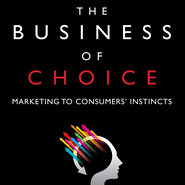- No categories
-
- My Account Subscribe Now | Sign In Log Out
- New York, July 16, 2025

For brands and online publishers, developing and deploying predictive modeling techniques to identify customers at-risk to churn is not rocket science. But it is pretty close.

You do not often see grocery store customers leaving a full cart in an aisle and wandering out of the store, but this happens all the time in mobile application shopping carts.

Many firms still solely rely on landlines to gather responses, partly due to regulations around robo calling mobile phones. Unfortunately, just supplementing the existing landline data with live calling to mobile phones is not a lasting, or even appropriate, solution.

With high-net-worth wealth management being automated through self-service online portals, and branchless banks such as Simple and Moven providing customized consumer banking services completely online, the ground under traditional financial institutions is shifting.

We are seeing traditional watchmakers respond to the smartwatch trend to varying degrees, and some of these innovation exercises could help them retain and even expand their legacy demographic.

According to an industry report by GSMA Intelligence, the mobile economy generated more than $2.1 trillion of economic activity. That is larger than the economy of 99 percent of the nations on Earth. It is projected to rise to almost $3 trillion by 2020.

Native ads in apps and on mobile sites typically see two- to five-times greater engagement than traditional banner ads, presenting a huge opportunity for mobile advertisers. However, agencies have not yet migrated to native on mobile as they have with desktop.

Mobile commerce is not turning into a windfall for every retailer.

The year is 1973, the place is Versailles, and five established French designers competed against five upstart U.S. designers in a fundraiser to renovate Versailles. Who won?

It can be difficult for marketers to obtain an accurate picture of the factors that contribute to the success or failure of campaigns and initiatives, especially on mobile platforms.

What is unique about the current digital age is the real-time signals, or the digital exhaust, that consumers are generating as they move through the digital and physical realms.

Instagram is the frontrunner of social networks with more than 300 million monthly active users uploading 70 million photos and videos daily. As a result, more brands are putting money and resources behind creating campaigns that will appeal to their photo-crazed consumers.

People’s fear of missing out is probably most present when people feel that something may be scarce.

Weather allows marketers to connect with consumers on a highly local level, targeting them with a relevant message at the right time. Seems straightforward? Think again.

Perhaps for the first time, researchers now have the ability to see digital device activity – smartphone, tablet and PC – at a millisecond-by-millisecond level, and then aggregate that data into patterns of days, weeks and months.

As orders of the Apple Watch build and consumer demand heightens for the tech market’s hottest new gadget, this time is likely to be remembered as a turning point for the entire class of wearables – from watches to glasses to fitness bands and whatever comes next.

Programmatic has completely changed the way that online ad buying works. Many businesses are quickly converting to this new method of buying and selling ad space. Yet, some are left wondering, what is it about this fairly new concept that is taking the digital advertising world by storm?

Responsive Web design is all the rage. We hear advocates asserting that “responsive is the way to develop sites.” Or “Google recommends responsive for SEO.”

Overall, mcommerce is expected to account for 40 percent of all global online transactions by the end of 2015. To be successful, marketers must have a strong hold on mobile performance marketing methods to drive sales.

How many of your mobile campaigns simply fail to generate the metrics that you really need to justify your mobile ad budget? I am guessing more than your directors would prefer.

One of the myths surrounding loyalty and luxury customers is that this audience does not value rewards because its wealth is inherited, and they are therefore indifferent to price and loyalty strategies.